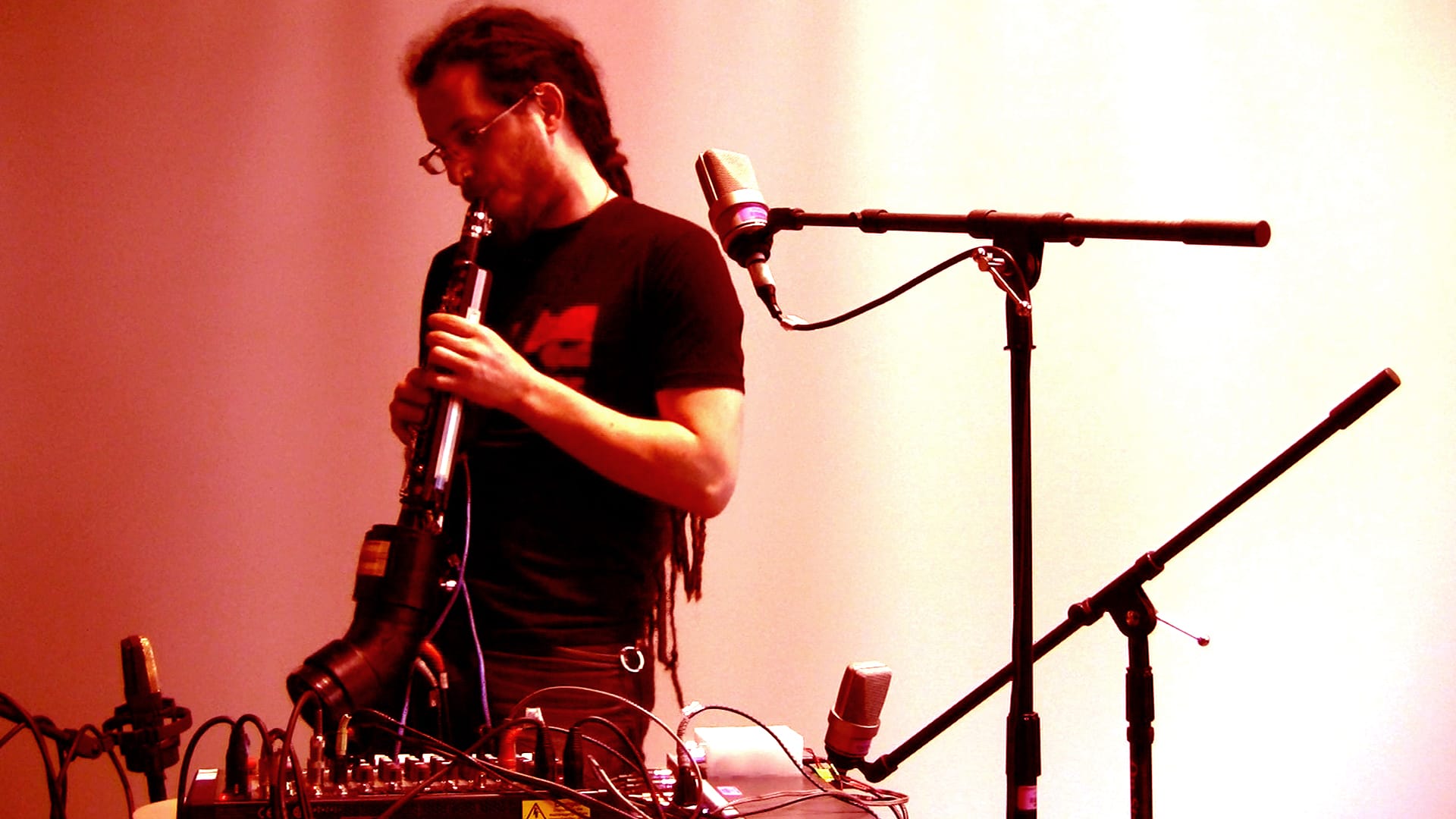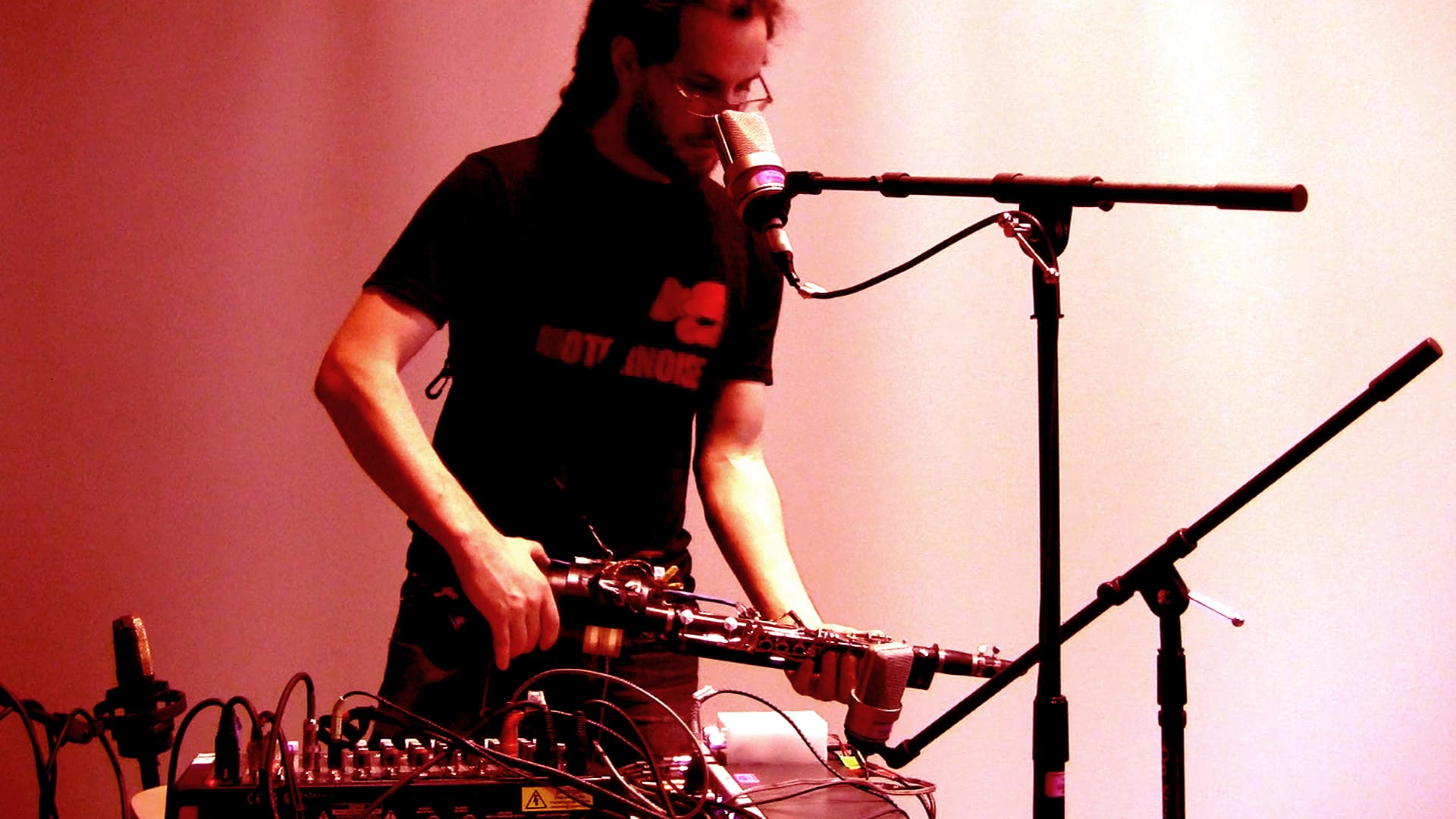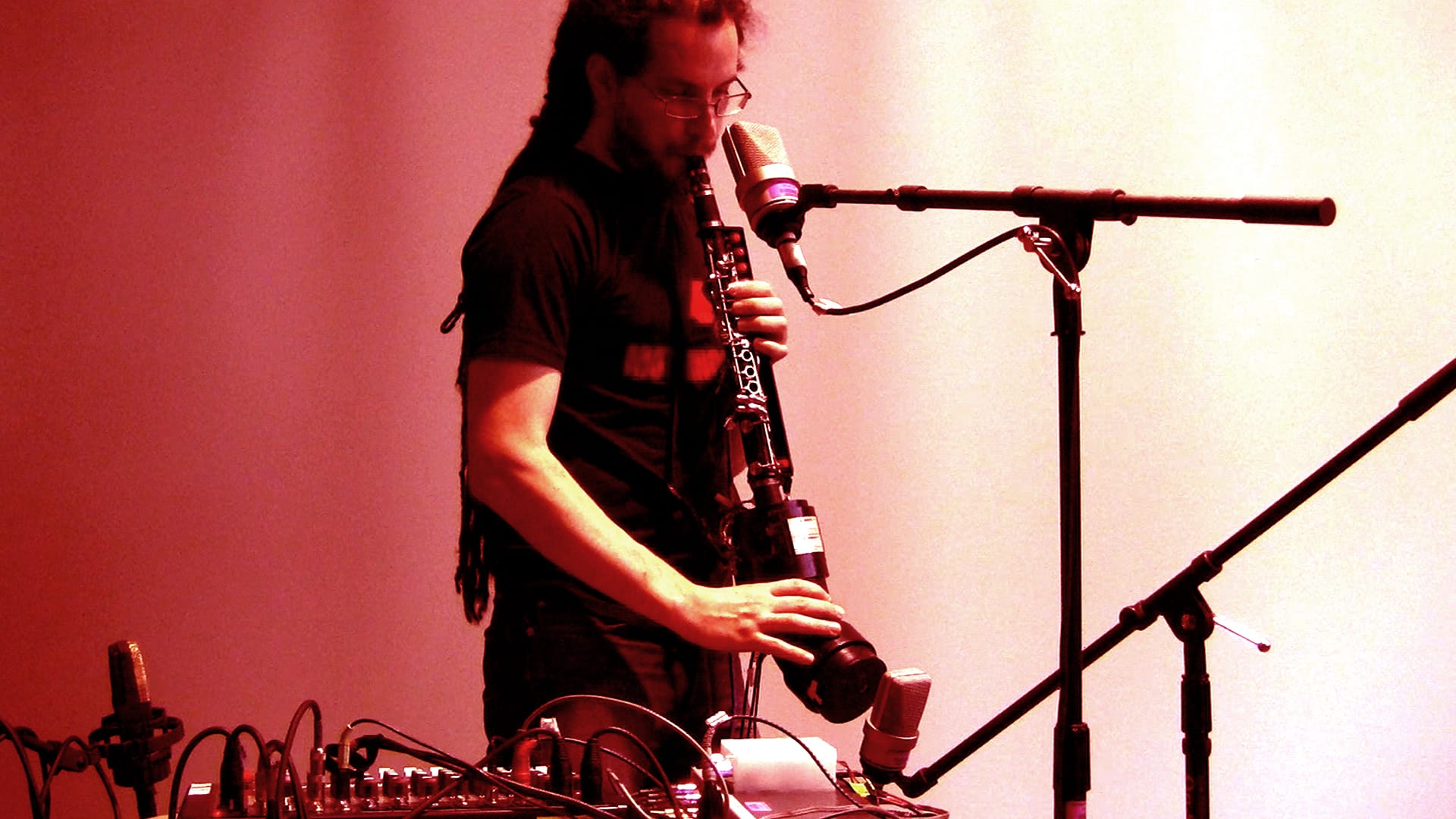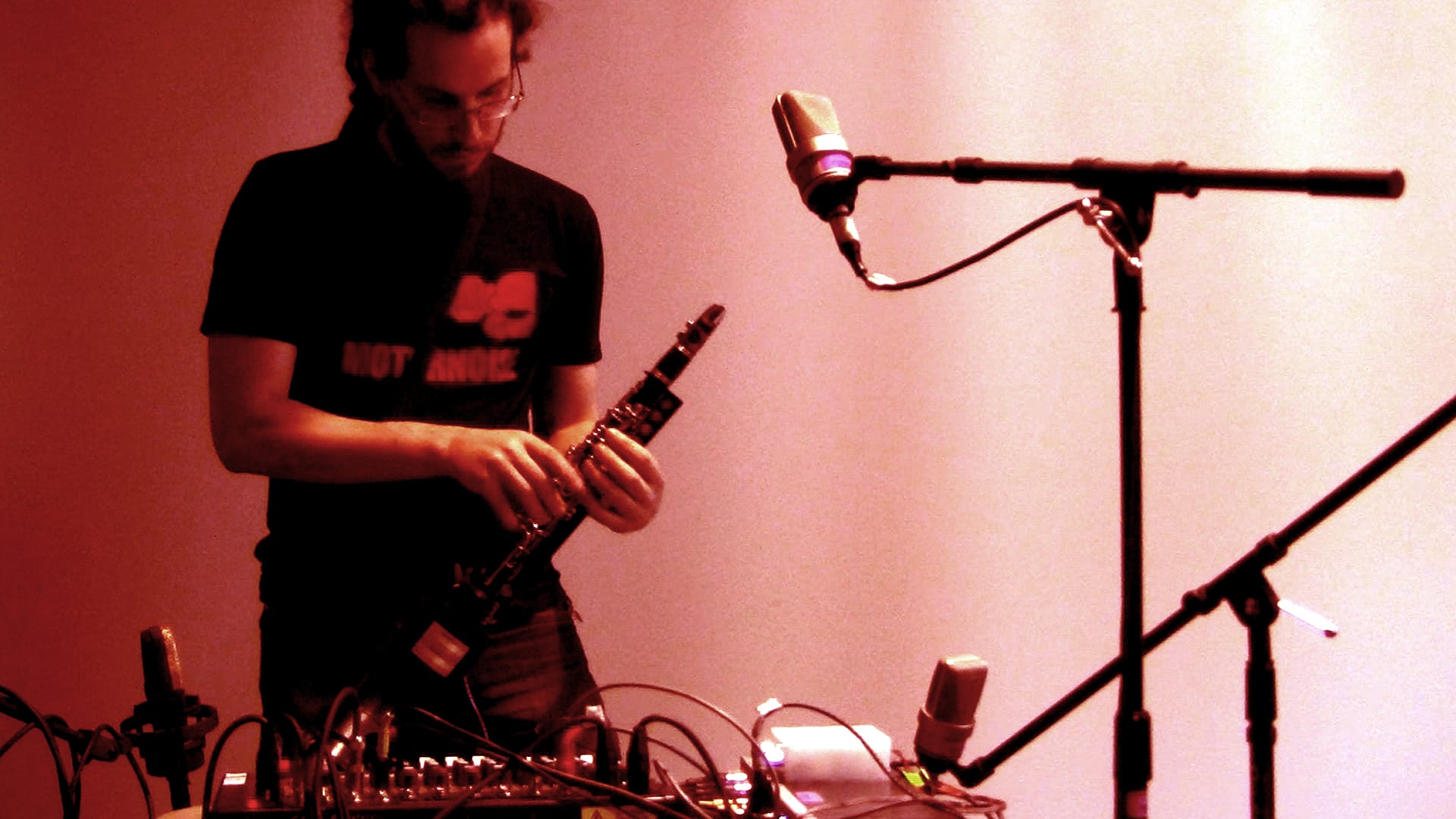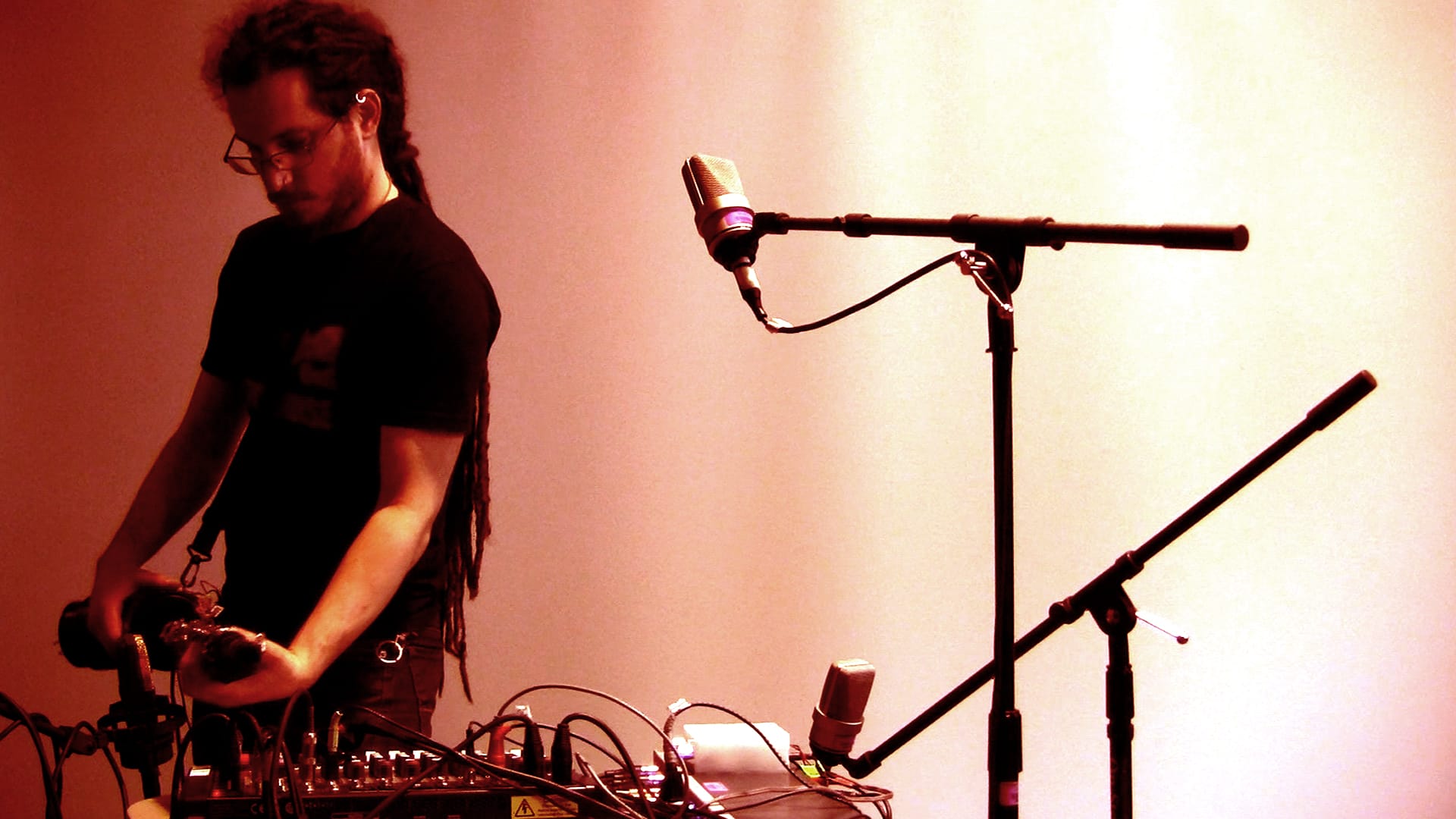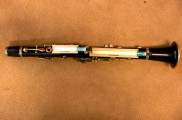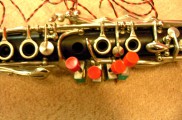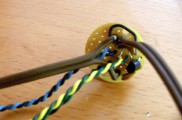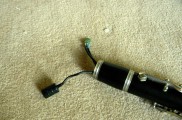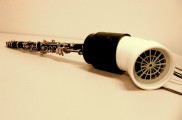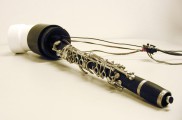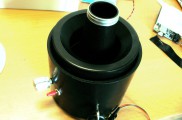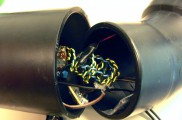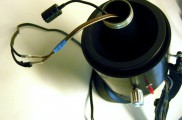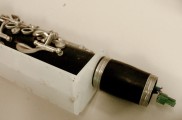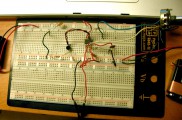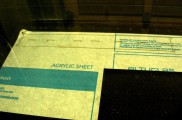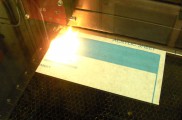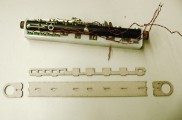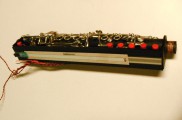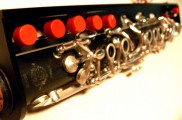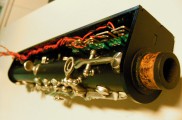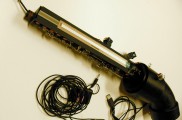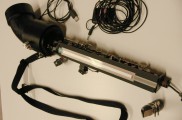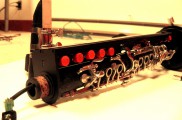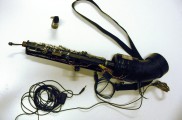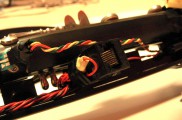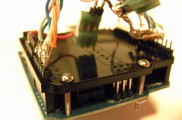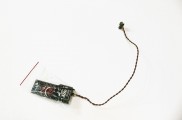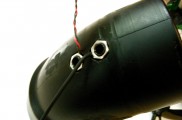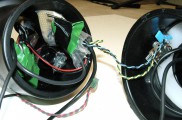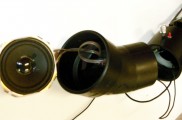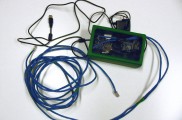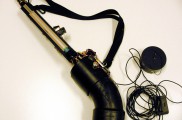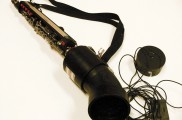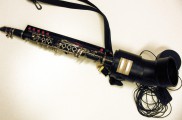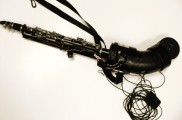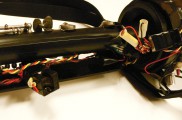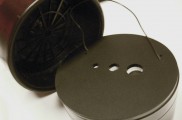The feedback-augmented sopranino clarinet was conceived, designed, and created by Stelios Manousakis in 5 (sleepless) days in May 2011, as part of the PhD General Exam at DXARTS (Center for Digital Arts and Experimental Media, University of Washington, Seattle). The project was the result of long-term research in digital musical instrument design, sensing, acoustics, haptics, non-standard digital sound synthesis and processing.
The instrument includes two embedded microphones, a speaker and a number of sensors. It is used at the same time as an acoustic instrument, an interactive acoustic filter, resonator and feedback chamber, a digital control interface, and a sound diffuser, being the central element of a compound hybrid synthesis system that involves acoustic, analog and digital sound generation – all tightly woven together, interfering and interacting with one another. The performer can excite the system by ordinarily playing the instrument, interfere or modulate it by changing its acoustic properties or using its on-board sensors, or generate vocal sounds to be picked up and passed through the system.

Acoustically, the basis of the feedback system includes two microphones placed inside the clarinet, one inside the barrel and another inside the bell; because of their position, they pick up different harmonics, with the one close to the mouthpiece being especially sensitive to what the performer does with his mouth, and also doubling as a breath controller. Their counterpart is a speaker held inside an attachment to the bell of the instrument. When sent direct sound from the two microphones, a feedback loop emerges within the instrument’s body which can be manually controlled by changing the acoustic properties of the clarinet as a resonant tube, i.e. by opening and closing finger holes, blocking the top end of the clarinet with the mouth, leaving it open or using the mouth cavity as a resonant chamber (sort of a talkbox effect), and by using a speaker mute. It can also be changed electrically by controlling the amount of amplification and mixture of the two microphones and EQing their output, as well as by controlling the volume and tone of the speaker from its amplifier.
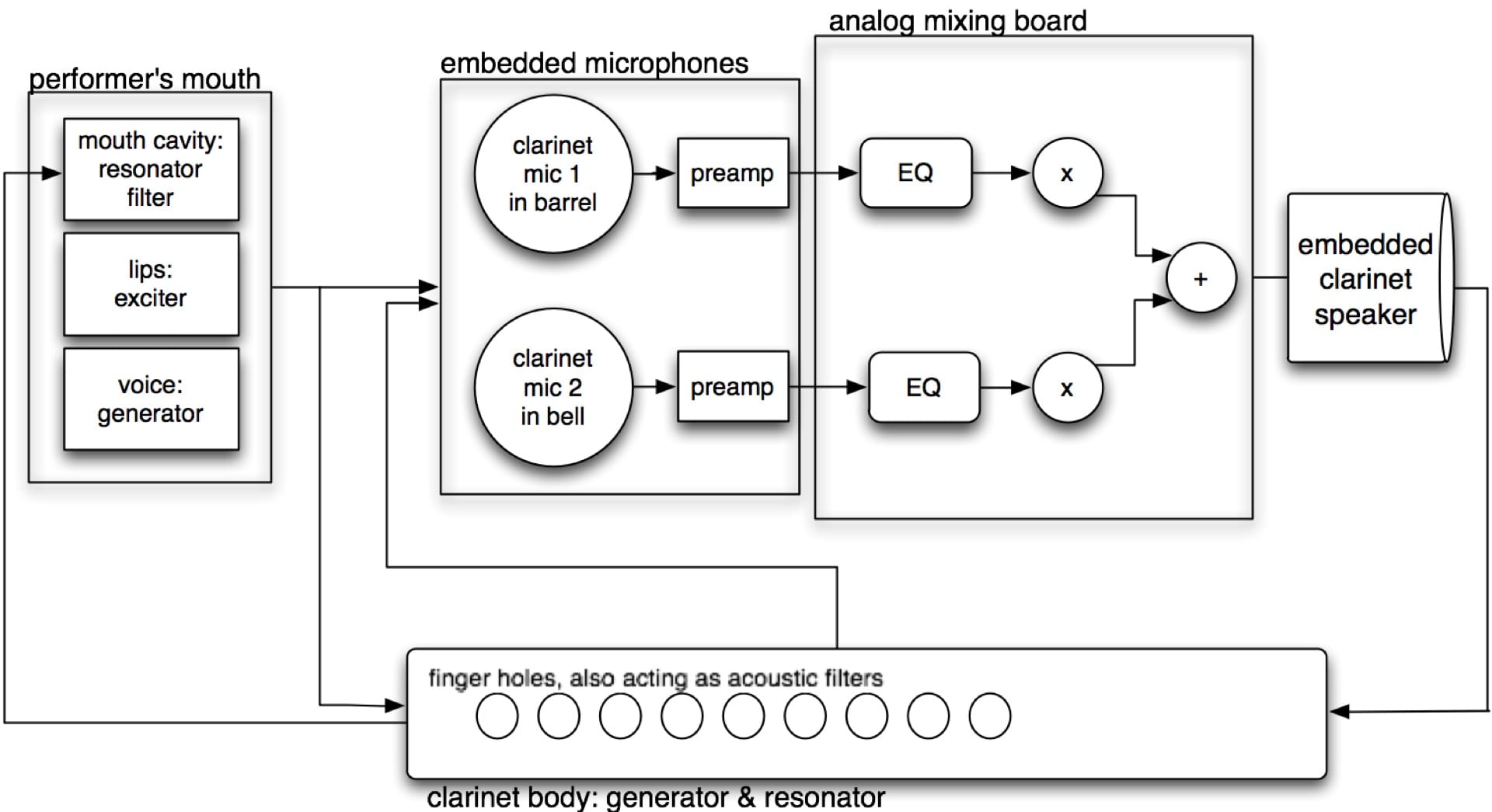
The microphone signal can also be sent to a computer for further processing. The resulting sound is routed to the PA but also to the embedded speaker, making the processed sound part of the feedback loop inside the clarinet. Thus, the sound of the processing can still be controlled by the same acoustic means as the acoustic feedback (i.e. finger holes, mouth, etc). More direct control of the processing is provided by a number of sensors. These are mounted on the body of the instrument directly (2 medium length soft-pot sliders close to the thumbs of the performer), on the bell attachment (2 short soft-pot sliders and a 3-axis accelerometer), and on a long extension parallel to the instrument (a very long double sensor combining pressure and position, and 6 buttons). The system can be further extended with the inclusion of external microphones, whose output can be routed to the embedded speaker – thus including the acoustics of the performance space in the feedback loop – to the stereo PA, and to the computer processing.

For the next iteration of the project, go to this page.
| Year: | 2011 (May 27-31) |
| Type: | Hardware & software design & development |
| Description: | Hybrid electro-acoustic instrument and interface |
| Materials/Media: | Electronics, acrylic, laser-cutter, Arduino micro-controller, sensors, software |
| Photo credit: | Stelios Manousakis |
